
Karen Blanche Black was an American actress, screenwriter, singer, and songwriter. She rose to prominence for her work in various studio and independent films in the 1970s, frequently portraying eccentric and offbeat characters, and established herself as a figure of New Hollywood. Her career spanned over 50 years and includes nearly 200 credits in both independent and mainstream films. Black received numerous accolades throughout her career, including two Golden Globe Awards, as well as an Academy Award nomination for Best Supporting Actress.

Victoria Louise Samantha Marie Elizabeth Therese Eggar is a retired English actress. After beginning her career in Shakespearean theatre she rose to fame for her performance in William Wyler's thriller The Collector (1965), which earned her a Golden Globe Award, a Cannes Film Festival Award and an Academy Award nomination for Best Actress.

Arthur Christopher Orme Plummer was a Canadian actor. His career spanned seven decades, gaining him recognition for his performances in film, stage and television. His accolades included an Academy Award, two Tony Awards and two Primetime Emmy Awards, making him the only Canadian recipient of the "Triple Crown of Acting". He also received a BAFTA Award, a Golden Globe Award and Screen Actors Guild Award, as well as a nomination for a Grammy Award.

Katharine Isobel Murray, known professionally as Katharine Isabelle, is a Canadian actress. She has been described as a scream queen due to her roles in various horror films. She started her acting career in 1989, playing a small role in the television series MacGyver. She gained fame for the role of Ginger Fitzgerald in the films Ginger Snaps, Ginger Snaps 2: Unleashed, and Ginger Snaps Back: The Beginning.
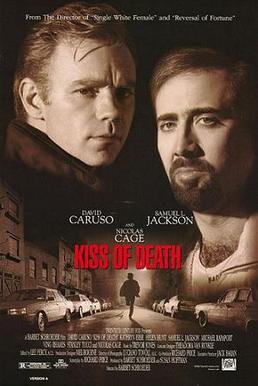
Kiss of Death is a 1995 American crime thriller film directed and produced by Barbet Schroeder, and starring David Caruso, Samuel L. Jackson, Nicolas Cage, Helen Hunt, Ving Rhames and Stanley Tucci.
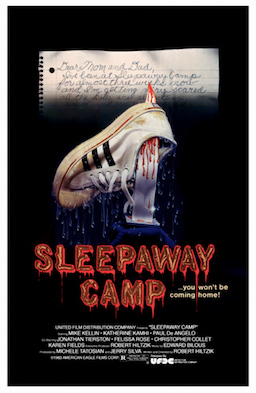
Sleepaway Camp is a 1983 American slasher film written and directed by Robert Hiltzik, and starring Mike Kellin, Katherine Kamhi, and Paul DeAngelo alongside Jonathan Tiersten, Felissa Rose, Christopher Collet, and Karen Fields. The original entry in the Sleepaway Camp film series, it focuses on serial killings which occur at a summer camp for teenagers.
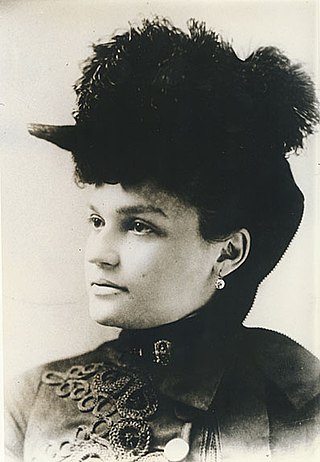
Belle Brezing was a nationally known madam in Lexington, Kentucky at the end of the 19th century and into the beginning of the 20th. Her brothel was known as the "most orderly of disorderly houses".

Megan "Meg" Foster is an American film and television actress. Some of her many roles were in the 1979 TV miniseries version of The Scarlet Letter, and the films Ticket to Heaven, The Osterman Weekend and They Live. She also starred as Christine Cagney in the first season of Cagney & Lacey.

Dayle Haddon was a Canadian model and actress, known for promoting anti-aging products manufactured by L'Oréal. Additionally, she was credited as the author of Ageless Beauty: A Woman's Guide to Lifelong Beauty and Well-Being. During the earlier part of her career as a model, Haddon appeared on the covers of many top fashion and beauty magazines, as well as the cover of the Sports Illustrated Swimsuit Issue in 1973. Haddon also served as a wellness contributor to CBS News where she appeared regularly on The Early Show at the turn of the 21st century. Haddon married French businessman Glenn Souham, who was murdered because of his believed connections to the Iran-Contra affair. They had one daughter, journalist and producer Ryan Haddon. Haddon died at her daughter's property due to carbon monoxide poisoning in December 2024.

Butcher, Baker, Nightmare Maker is a 1981 American exploitation horror film directed by William Asher, and starring Susan Tyrrell, Jimmy McNichol, Julia Duffy, and Bo Svenson. Framed as a contemporary Oedipus tale, the plot focuses on a teenager who, raised by his neurotic aunt, finds himself at the center of a murder investigation after she stabs a man to death in their house. The boy's sexually repressed aunt secretly harbors incestuous feelings for him, while a detective investigating the crime irrationally believes the murder to be a result of a homosexual love triangle.
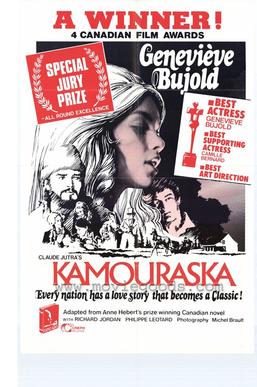
Kamouraska is a 1973 French-Canadian film directed and written by Claude Jutra, based on the 1970 novel of the same name by Anne Hébert. At the time of its release it was the most expensive film ever made in Canadian history. It won four Canadian Film Awards, but was unsuccessful at the box office.
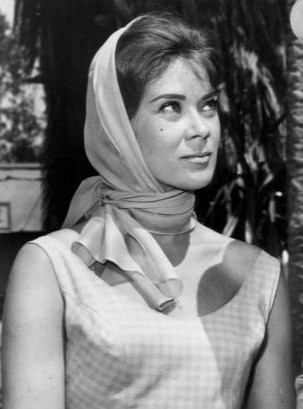
Antoinette Bower is a British retired film, television and stage actress, whose career lasted nearly four decades.
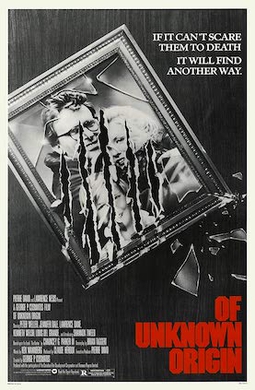
Of Unknown Origin is a 1983 psychological horror film directed by George P. Cosmatos in his North American film debut, and starring Peter Weller, Jennifer Dale, Lawrence Dane, Maury Chaykin, Kenneth Welsh, Louis Del Grande and Shannon Tweed in her film debut. Based on the 1979 novel The Visitor by Chauncey G. Parker III, it focuses on a mild-mannered Manhattan banker who becomes increasingly obsessive and destructive in his attempts to kill a rat loose in his renovated brownstone. The film's title refers to the misconception that rats have no known origin.

Full Circle, released in the United States as The Haunting of Julia, is a 1977 supernatural horror film directed by Richard Loncraine, and starring Mia Farrow and Keir Dullea. Based on the novel Julia by the American writer Peter Straub, it is the first film realisation of one of his books, and follows a woman who, after the death of her daughter, finds herself haunted by the vengeful ghost of a young girl in her new home.

Man-Proof is a 1938 American romantic comedy film directed by Richard Thorpe. The film is based on the 1937 novel The Four Marys written by Fannie Heaslip Lea.
Karen Carlson is an American retired actress. She is also a director, producer and writer.

Christine Belford is an American former television and film actress. She has sometimes been credited as Christina Belford.
Harvey Hart was a Canadian television and film director and a television producer.

Fear No Evil is a 1981 American horror film directed by Frank LaLoggia, and starring Stefan Arngrim, Elizabeth Hoffman, and Kathleen Rowe McAllen. Its plot involves a seventeen-year-old student in 1980 realizing that he is the Antichrist, and his subsequent battle with two female-incarnate archangels. Fear No Evil was the directorial debut for LaLoggia, who personally raised $150,000 of the film's budget.
Terry Haig is a Canadian actor, radio host, and journalist. He had a featured role in the 1973 film, The Pyx and hosted sports radio programs in Montreal during the 1990s.

















